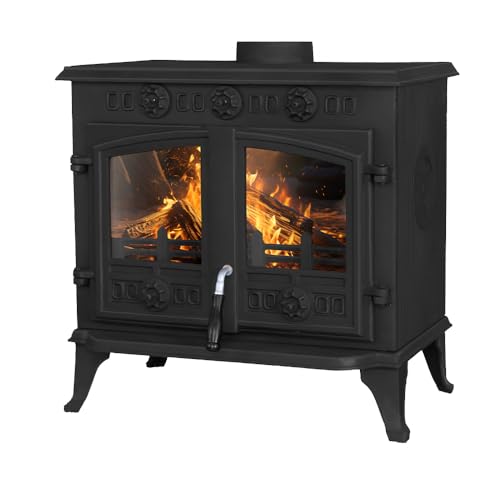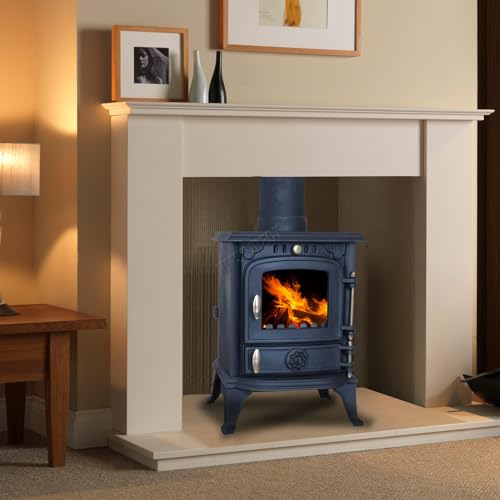What is a Log Burner and How Does it Work?
Understanding Log Burners
A log burner, also known as a wood-burning stove, is a highly efficient way to heat your home using wood as fuel. Unlike traditional open fires that lose a lot of heat and produce excess smoke, log burners are designed to burn wood more completely. They work by creating a closed chamber where wood logs are placed. Once the logs are ignited, the stove draws in air through vents, allowing for an efficient combustion process. This not only maximises heat output but also minimises emissions, making log burners a more environmentally friendly option compared to standard fireplaces.
The Science Behind Log Burners
At the core of a log burner’s operation is its ability to create a controlled environment for burning wood. When you light the logs, they produce a combination of heat and gases. A fan or a natural chimney effect pulls the hot air and gases up and out of the stove through a flue, creating a vacuum that draws in more fresh air from outside the stove. This process intensifies the heat and produces less smoke, resulting in a more complete burn and better efficiency.
Key Benefits of Owning a Log Burner
Cost-Effective Heating Solution
Investing in a log burner can lead to substantial savings on heating bills, particularly in colder months. While the initial cost of purchasing and installing a log burner may seem high, the savings over time from reduced energy costs can offset this investment. By using sustainably sourced wood, we can enjoy a reliable and renewable heating source.
Creating a Warm Atmosphere
One of the most appealing aspects of a log burner is the unique ambiance it brings to a home. The flicker of flames and the crackling of wood create a cosy atmosphere that simply can’t be matched by central heating. Whether it’s a chilly winter evening or a summer barbecue, the warmth and charm from a log burner can enhance any occasion.
Increased Safety and Control
Modern log burners are often designed with several safety features—such as air-wash systems and glass panels—that allow for safe viewing of the fire without the risk of sparks escaping like in open fires. Additionally, you have more control over the heat output since log burners provide more efficient heating, allowing us to maintain a comfortable living environment.
Choosing the Right Log Burner for Your Home
Assessing Your Heating Needs
Before making a purchase, it’s essential to assess the size of the area you want to heat. Log burners come in various sizes and heat outputs, measured in kilowatts (kW). A small burner may suffice for a compact space, while larger rooms may require more powerful models. We recommend considering factors like insulation and window sizes to determine the appropriate output.
Design and Aesthetics
Log burners are available in a diverse range of styles and finishes, ensuring that there’s a model that complements your home decor. From traditional cast iron designs that exude rustic charm to sleek, modern models that fit contemporary aesthetics, finding a log burner that fits into your home’s design can be an enjoyable part of the selection process.
Efficiency and Environmental Considerations
Efficiency ratings vary among log burners, and it is crucial to select a model that adheres to stringent efficiency standards. A higher-rated log burner will not only reduce your wood consumption but also contribute to fewer emissions, helping to keep our air clean. Look for details about efficiency rating to guide your decision.
Installation and Maintenance Tips for Log Burners
Professional Installation
For optimal safety and performance, we strongly recommend hiring a qualified professional for the installation of a log burner. This ensures that all connections are correctly configured and that your stove meets local building regulations. A professional can handle flue installation and provide advice on positioning to maximise heat distribution.
Regular Cleaning and Maintenance
Proper maintenance is crucial for the longevity of your log burner. We should clean the flue and the firebox regularly to prevent soot buildup, which can affect performance and safety. Checking the seals on doors and air vents ensures that your burner operates efficiently, while an annual professional inspection is advisable to catch any potential issues before they escalate.
Seasonal Wood Storage
When using a log burner, the type of wood we choose matters a lot. Always opt for well-seasoned wood that has dried for at least six months. This type of wood burns cleaner and more efficiently, resulting in better heat output and less smoke. Additionally, store your logs in a dry place, ideally raised off the ground, to prevent moisture absorption.
Log Burner Accessories You Should Consider
Essential Tools
Certain accessories can enhance the efficiency and safety of your log burner. A log basket is a practical addition, keeping firewood easily accessible and tidy. Tools like a poker, tongs, and a shovel are also essential for managing the fire safely and effectively. These tools not only help us maintain the fire but also add an authentic touch to the log burner experience.
Safety Features
Consider investing in a carbon monoxide detector if you’re using a log burner, as this is an essential safety precaution for any heating appliance. Additionally, fireplace gloves can protect your hands when handling logs or adjusting the fire. These safety accessories ensure that we can enjoy the warmth of our log burner with peace of mind.
Aesthetics and Enhancements
We can enhance our log burner experience by adding decorative grates or log holders that match our home’s style. These small touches can showcase our personal style while also serving functional purposes. Furthermore, a stylish hearth rug can not only add warmth to the room but also protect flooring from ash or embers.














